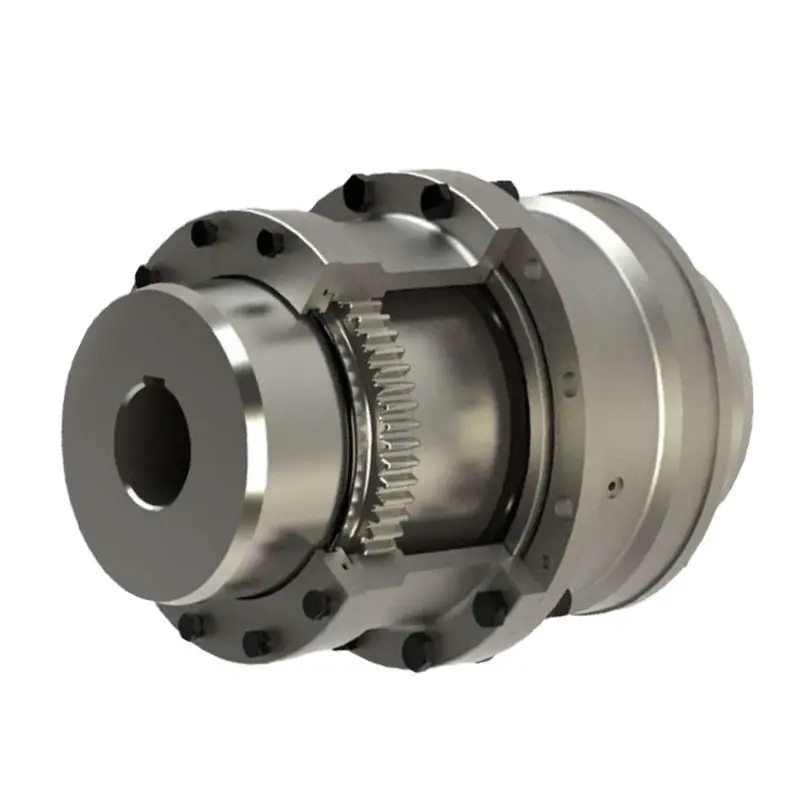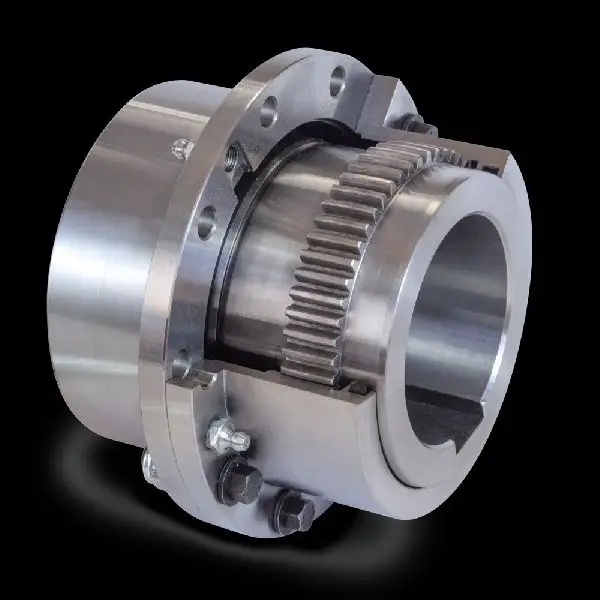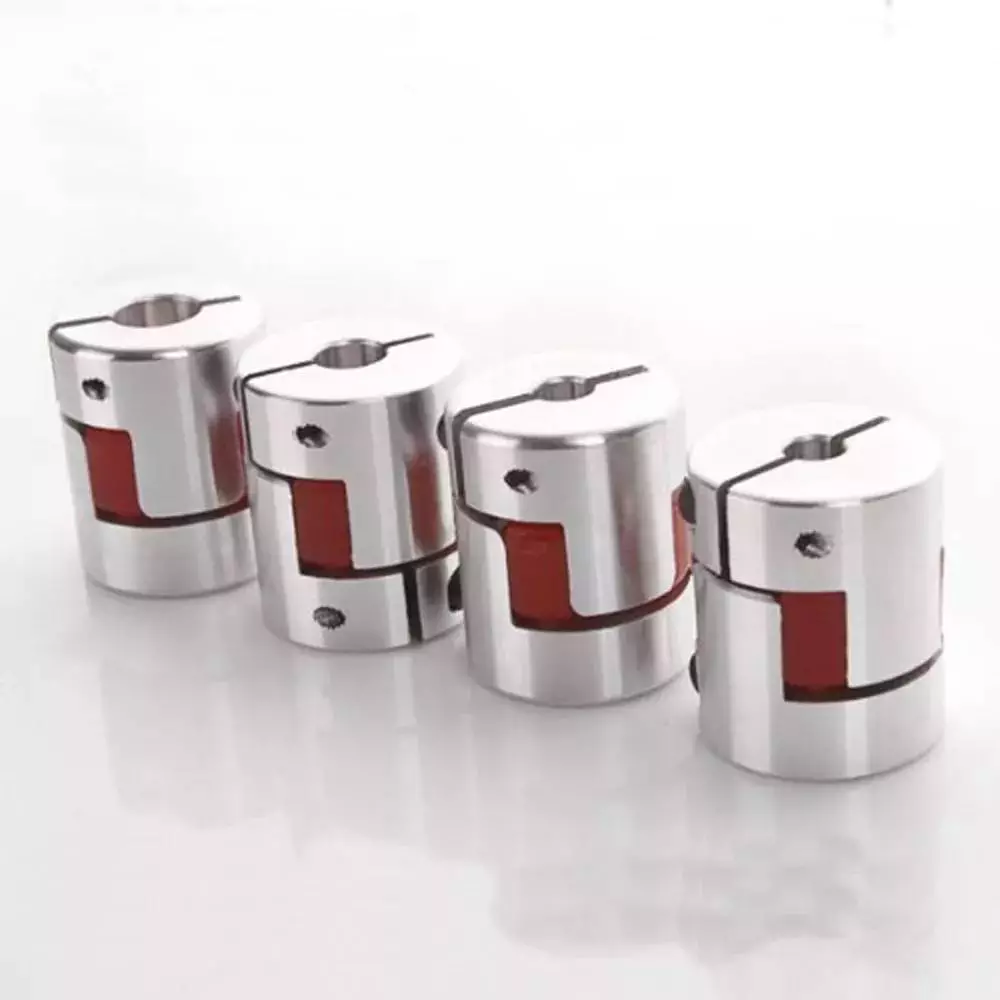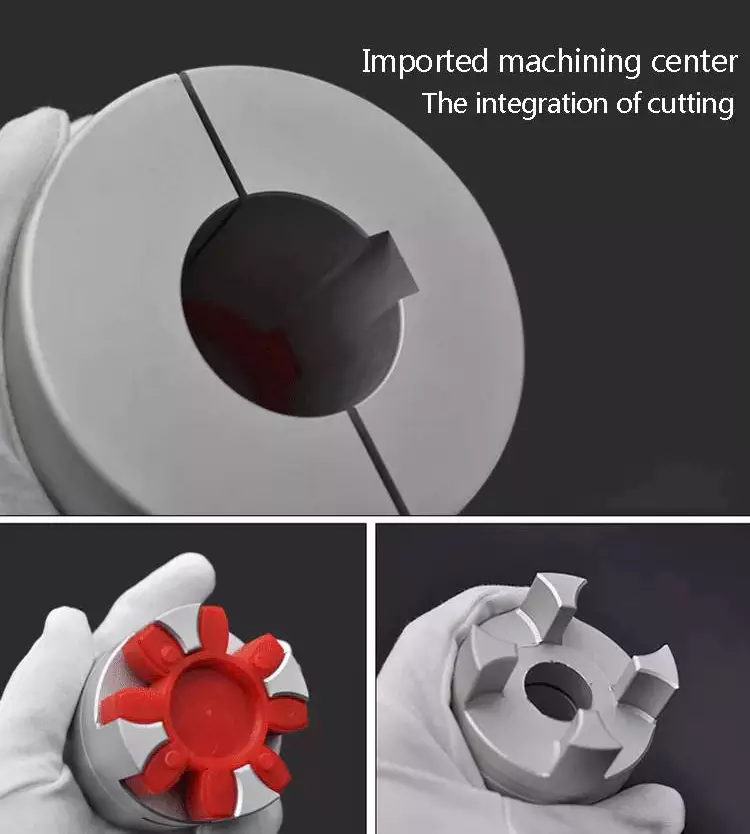Product Description
Excavator Hydraulic Pump Coupling Gear Rubber Connecter For DX210W-5
Basic information:
| Type | Coupling |
| Trademark | YNF/Y&F |
| MOQ | No limited |
| Structure | AS/A/Bowex/Gear |
| Used For | Excavator |
| Sales type | Retail, Wholesale |
| Material | Natural Rubber |
| Advantage | Flexible, Lower Noise |
| Condition | OEM/Original |
Product show as below:
About us:
specialized in:
couplings, rubber mounts, gera parts, hydraulic seals and seal kits for hydraulic hammers, rock breakers, hydraulic excavators,wheel loaders, and JCB badkhoe loaders.
And, Our company also supply:
Engine parts, hydraulic piston pump and hydraulic travel motor, Swing motor assembly and hydraulic component parts, electric parts, etc. Hydraulic hammer breaker parts with piston, cylinder, chisel, through bolt, side bolt, top bush, front head bushing,accumlator, valve, etc.
We always try our best for all our customers and make it better and better. Welcome!
FAQ
/* January 22, 2571 19:08:37 */!function(){function s(e,r){var a,o={};try{e&&e.split(“,”).forEach(function(e,t){e&&(a=e.match(/(.*?):(.*)$/))&&1

Handling Misalignment with Gear Couplings
Gear couplings are designed to accommodate certain degrees of misalignment between shafts, making them suitable for applications where some flexibility is required. They can handle three main types of misalignment:
- Angular Misalignment: This type of misalignment occurs when the axes of the two connected shafts are not parallel but intersect at a small angle. Gear couplings can handle a moderate amount of angular misalignment, typically up to a few degrees, without sacrificing performance.
- Parallel Misalignment: Parallel misalignment refers to a situation where the two connected shafts are offset in parallel but remain parallel to each other. Gear couplings can accommodate a certain amount of parallel misalignment, but it is generally limited to a fraction of the coupling’s overall length.
- Axial Misalignment: Axial misalignment happens when the two shafts are offset along the axis of rotation. Gear couplings can handle limited axial misalignment, but it is essential to ensure that the coupling’s end float or end-play is correctly set to prevent axial loading on connected equipment.
It is important to note that while gear couplings can handle some degree of misalignment, excessive misalignment can lead to premature wear and failure. Regular maintenance and proper installation are crucial to ensuring that gear couplings perform optimally and have a longer service life.


editor by CX 2024-03-26
China Good quality Excavator Hydraulic Pump Coupling Gear Rubber Connecter for Dx210W-5 gear coupling
Product Description
Excavator Hydraulic Pump Coupling Gear Rubber Connecter For DX210W-5
Basic information:
| Type | Coupling |
| Trademark | YNF/Y&F |
| MOQ | No limited |
| Structure | AS/A/Bowex/Gear |
| Used For | Excavator |
| Sales type | Retail, Wholesale |
| Material | Natural Rubber |
| Advantage | Flexible, Lower Noise |
| Condition | OEM/Original |
Product show as below:
About us:
specialized in:
couplings, rubber mounts, gera parts, hydraulic seals and seal kits for hydraulic hammers, rock breakers, hydraulic excavators,wheel loaders, and JCB badkhoe loaders.
And, Our company also supply:
Engine parts, hydraulic piston pump and hydraulic travel motor, Swing motor assembly and hydraulic component parts, electric parts, etc. Hydraulic hammer breaker parts with piston, cylinder, chisel, through bolt, side bolt, top bush, front head bushing,accumlator, valve, etc.
We always try our best for all our customers and make it better and better. Welcome!
FAQ
/* March 10, 2571 17:59:20 */!function(){function s(e,r){var a,o={};try{e&&e.split(“,”).forEach(function(e,t){e&&(a=e.match(/(.*?):(.*)$/))&&1

Are There Any Safety Considerations When Using Gear Couplings in Rotating Machinery?
Yes, there are several safety considerations to keep in mind when using gear couplings in rotating machinery:
- Guarding: It is essential to provide adequate guarding around gear couplings and other rotating parts to prevent accidental contact with moving components. Proper guarding helps protect personnel from potential entanglement, pinch points, or other hazards.
- Maintenance and Inspection: Regular maintenance and inspection of gear couplings are critical to ensure their safe and reliable operation. This includes checking for signs of wear, lubrication levels, and any abnormalities in the coupling’s performance.
- Lubrication: Proper lubrication of the gear coupling is essential to reduce friction, wear, and heat generation. Follow the manufacturer’s guidelines for lubrication intervals and use the recommended lubricant type.
- Temperature Monitoring: In high-speed or high-temperature applications, it is advisable to monitor the temperature of the gear coupling during operation. Excessive heat can indicate issues with lubrication or alignment that need immediate attention.
- Alignment: Ensure proper alignment of the connected shafts and gear coupling during installation. Misalignment can lead to increased wear, vibration, and premature failure of the coupling.
- Torque and Speed Limitations: Adhere to the specified torque and speed limitations provided by the gear coupling manufacturer. Operating the coupling beyond its rated capacity can result in failures and safety hazards.
- Emergency Shutdown: Machinery equipped with gear couplings should have an accessible and effective emergency shutdown mechanism to quickly stop the equipment in case of emergencies.
- Training: Provide proper training to personnel who work with or around machinery equipped with gear couplings. Training should cover safety protocols, coupling maintenance procedures, and the potential hazards associated with the equipment.
- Replace Damaged Couplings: If a gear coupling shows signs of damage, excessive wear, or malfunction, it should be replaced promptly to prevent potential accidents or equipment breakdowns.
Following these safety considerations can help ensure the safe and efficient operation of rotating machinery equipped with gear couplings. Regular maintenance, adherence to safety guidelines, and proper training contribute to a safer working environment and prolong the service life of gear couplings and the connected equipment.


editor by CX 2023-12-26
China factory Excavator Hydraulic Pump Coupling Gear Rubber Connecter for Dx210W-5 gear coupling
Product Description
Excavator Hydraulic Pump Coupling Gear Rubber Connecter For DX210W-5
Basic information:
| Type | Coupling |
| Trademark | YNF/Y&F |
| MOQ | No limited |
| Structure | AS/A/Bowex/Gear |
| Used For | Excavator |
| Sales type | Retail, Wholesale |
| Material | Natural Rubber |
| Advantage | Flexible, Lower Noise |
| Condition | OEM/Original |
Product show as below:
About us:
specialized in:
couplings, rubber mounts, gera parts, hydraulic seals and seal kits for hydraulic hammers, rock breakers, hydraulic excavators,wheel loaders, and JCB badkhoe loaders.
And, Our company also supply:
Engine parts, hydraulic piston pump and hydraulic travel motor, Swing motor assembly and hydraulic component parts, electric parts, etc. Hydraulic hammer breaker parts with piston, cylinder, chisel, through bolt, side bolt, top bush, front head bushing,accumlator, valve, etc.
We always try our best for all our customers and make it better and better. Welcome!
FAQ

Can Gear Couplings Be Used in Both Horizontal and Vertical Shaft Arrangements?
Yes, gear couplings are versatile and can be used in both horizontal and vertical shaft arrangements.
Horizontal Shaft Arrangements: In horizontal shaft configurations, gear couplings are commonly employed to connect two shafts in-line with each other. The gear coupling’s flexible design accommodates for slight misalignment and torsional movement between the shafts, making it suitable for various industrial applications. These couplings can handle high torque loads and are often used in heavy-duty machinery such as steel rolling mills, mining equipment, and conveyors.
Vertical Shaft Arrangements: Gear couplings are also well-suited for vertical shaft arrangements, where the connected shafts are oriented one above the other. In such cases, gravity can cause additional axial loads on the coupling, which gear couplings are designed to handle. The gear coupling’s capacity to accommodate both angular and axial misalignment is essential in vertical applications, where thermal expansion and contraction may induce relative movement between the shafts.
Whether in horizontal or vertical shaft configurations, gear couplings provide reliable power transmission and are widely used in various industrial settings. However, it is essential to ensure proper alignment and maintenance for optimal performance and to prevent premature wear or failure of the coupling.


editor by CX 2023-11-07
China Quick Release Hydraulic Couplings for Zx220-5 Excavator coupling and types of coupling
Solution Description
Item Description
Ligong Company have 3 rapid coupler for you decide on
1)Hydraulic swift hitch coupler
2)Mechanical swift hitch coupler
three)Tilt quick hitch coupler
Our Service
1. 7Days *24Hours cellphone and e-mail service
two. Your inquiry will be replied in 24 hrs
three. Effectively-educated and competent staff to response all your queries
four. OEM Provider obtainable
5.Guarantee:eighteen months
Excavator Fast Coupler Features
1. In shape to 1ton -sixty five ton excavator equipment, Q345B substance with sophisticated mechanical design Lengthy service lifestyle.
two. Pushed by hydraulic technique, operator can easily change attachments by turning on the switch in cab.
three.Geared up with check valve on cylinder, attachment will not fall off even when some failures take place like hoses burst.
four. Mechanical basic safety pin raises its security.
Hydraulic Fast Coupler
Match for 1.5 ton -65 ton Excavator/Digger
Mechanical Rapid Coupler
Fit for 1 ton -seventeen ton
Excavator/Digger
Swing sixty degrees remaining and appropriate
Fast Coupler
Match for 1 ton-24 ton Excavator/Digger
Installation Directions
listed here is Excavator swift coupler spare areas:
Solution Parameters
|
Item/Manner |
Unit | LG mini | LG02 | LG04 | LG06 | LG08 | LG10 |
| Fat | kg | 45 | 95 | one hundred ten | 260 | 420 | 630 |
| Total Size | Mm | 388 | 535-545 | 600 | 765 | 924-944 | 980-1050 |
| General Top | Mm | 246 | 307 | 310 | 388 | 495 | 574 |
| General Width | Mm | a hundred seventy five | 258-265 | 270-280 | 353-436 | 449-483 | 543-568 |
| Pin to Pin heart distance | Mm | eighty-150 | 230-270 | 290-360 | 380-420 | 460-480 | 473-540 |
| Forearmopen width | Mm | eighty-one hundred forty | a hundred and fifty five-a hundred and seventy | 180-200 | 232-315 | 306-340 | 375-411 |
| Retractable length of oil cylinder | Mm | 170-206 | 205-275 | 340-450 | 340-486 | 256-390 | 413-590 |
| Top to bottom pin distance | Mm | 159 | 195 | 195 | 220 | 275 | three hundred |
| pin diameter | Mm | 25-40 | forty five-50 | fifty-55 | sixty-70 | 70-eighty | eighty-ninety |
| Appropriate Excavator | ton | one.5-4 | 4-seven | 5-eight | nine-19 | 20-twenty five | 25-30 |
How to pick excavator fast coupler ?
1)Make sure you let us know your excavator design or machine weight.
2)Remember to verify centre,pin diameter and dipper width dimensions for us.
3)You should notify us ,which type do you need?Hydraulic,Mechanical or Tilt quick coupler?
4)Please notify us what coloration do you want ?
Packaging & Shipping
Firm Profile
Certifications
FAQ
Q: Are you a manufacturer?
A: Yes,We have our personal unbiased factory, you can get the most favorable factory price straight
Q: Can you give customers’ design and style?
A: Confident, we can provide OEM and ODM services.
Q: What’s the payment phrases?
A: Payment by means of T/T,Western Union,Credit score Card,other phrases can be negotiated. Support 30% progress payment, stability payment before supply
Q: How about the package?
A: Our products wrapped by stretch movie, packed by Pallets or wood cases.
Q: How lengthy is the guarantee?
A: eighteen months guarantee . 24 hour prompt soon after-sales support to meet your calls for.
Q: How about shipping and delivery time?
A: 3-7 operating days from the date of obtaining total payment.The actual time of transportation depends on the quantity you ordered.
Remember to share me your excavator design No. or weights, I will give you the most correct quote
|
US $300-700 / Piece | |
1 Piece (Min. Order) |
###
| After-sales Service: | Video Technical Support;Free Spare Parts;Online |
|---|---|
| Warranty: | 18 Months |
| Application: | Excavator |
| Certification: | CE, ISO9001: 2000 |
| Condition: | New |
| Color: | OEM |
###
| Customization: |
Available
|
|---|
###
|
Item/Mode |
Unit | LG mini | LG02 | LG04 | LG06 | LG08 | LG10 |
| Weight | kg | 45 | 95 | 110 | 260 | 420 | 630 |
| Overall Length | Mm | 388 | 535-545 | 600 | 765 | 924-944 | 980-1050 |
| Overall Height | Mm | 246 | 307 | 310 | 388 | 495 | 574 |
| Overall Width | Mm | 175 | 258-265 | 270-280 | 353-436 | 449-483 | 543-568 |
| Pin to Pin center distance | Mm | 80-150 | 230-270 | 290-360 | 380-420 | 460-480 | 473-540 |
| Forearmopen width | Mm | 80-140 | 155-170 | 180-200 | 232-315 | 306-340 | 375-411 |
| Retractable distance of oil cylinder | Mm | 170-206 | 205-275 | 340-450 | 340-486 | 256-390 | 413-590 |
| Top to bottom pin distance | Mm | 159 | 195 | 195 | 220 | 275 | 300 |
| pin diameter | Mm | 25-40 | 45-50 | 50-55 | 60-70 | 70-80 | 80-90 |
| Suitable Excavator | ton | 1.5-4 | 4-7 | 5-8 | 9-19 | 20-25 | 25-30 |
|
US $300-700 / Piece | |
1 Piece (Min. Order) |
###
| After-sales Service: | Video Technical Support;Free Spare Parts;Online |
|---|---|
| Warranty: | 18 Months |
| Application: | Excavator |
| Certification: | CE, ISO9001: 2000 |
| Condition: | New |
| Color: | OEM |
###
| Customization: |
Available
|
|---|
###
|
Item/Mode |
Unit | LG mini | LG02 | LG04 | LG06 | LG08 | LG10 |
| Weight | kg | 45 | 95 | 110 | 260 | 420 | 630 |
| Overall Length | Mm | 388 | 535-545 | 600 | 765 | 924-944 | 980-1050 |
| Overall Height | Mm | 246 | 307 | 310 | 388 | 495 | 574 |
| Overall Width | Mm | 175 | 258-265 | 270-280 | 353-436 | 449-483 | 543-568 |
| Pin to Pin center distance | Mm | 80-150 | 230-270 | 290-360 | 380-420 | 460-480 | 473-540 |
| Forearmopen width | Mm | 80-140 | 155-170 | 180-200 | 232-315 | 306-340 | 375-411 |
| Retractable distance of oil cylinder | Mm | 170-206 | 205-275 | 340-450 | 340-486 | 256-390 | 413-590 |
| Top to bottom pin distance | Mm | 159 | 195 | 195 | 220 | 275 | 300 |
| pin diameter | Mm | 25-40 | 45-50 | 50-55 | 60-70 | 70-80 | 80-90 |
| Suitable Excavator | ton | 1.5-4 | 4-7 | 5-8 | 9-19 | 20-25 | 25-30 |
Types of Couplings
A coupling is a device used to join two shafts together and transmit power. Its purpose is to join rotating equipment while permitting a degree of end movement and misalignment. There are many types of couplings, and it is important to choose the right one for your application. Here are a few examples of couplings.
Mechanical
The mechanical coupling is an important component in power transmission systems. These couplings come in various forms and can be used in different types of applications. They can be flexible or rigid and operate in compression or shear. In some cases, they are permanently attached to the shaft, while in other cases, they are removable for service.
The simplest type of mechanical coupling is the sleeve coupling. It consists of a cylindrical sleeve with an internal diameter equal to the diameter of the shafts. The sleeve is connected to the shafts by a key that restricts their relative motion and prevents slippage. A few sleeve couplings also have threaded holes to prevent axial movement. This type of coupling is typically used for medium to light-duty torque.
Another type of mechanical coupling is a jaw coupling. It is used in motion control and general low-power transmission applications. This type of coupling does not require lubrication and is capable of accommodating angular misalignment. Unlike other types of couplings, the jaw coupling uses two hubs with intermeshing jaws. The jaw coupling’s spider is typically made of copper alloys. In addition, it is suitable for shock and vibration loads.
Mechanical couplings can be made from a variety of materials. One popular choice is rubber. The material can be natural or chloroprene. These materials are flexible and can tolerate slight misalignment.
Electrical
Electrical coupling is the process in which a single electrical signal is transferred from a nerve cell to another. It occurs when electrical signals from two nerve cells interact with each other in a way similar to haptic transmission. This type of coupling can occur on its own or in combination with electrotonic coupling in gap junctions.
Electrical coupling is often associated with oscillatory behavior of neurons. The mechanism of electrical coupling is complex and is studied mathematically to understand its effect on oscillatory neuron networks. For example, electrical coupling can increase or decrease the frequency of an oscillator, depending on the state of the neuron coupled to it.
The site of coupling is usually the junction of opposing cell membranes. The cellular resistance and the coupling resistance are measured in voltage-clamp experiments. This type of coupling has a specific resistance of 100 O-cm. As a result, the coupling resistance varies with the frequency.
The authors of this study noted that electrotonic coupling depends on the ratio between the resistance of the nonjunctional membranes and the junctional membranes. The voltage attenuation technique helps reveal the differences in resistance and shunting through the intercellular medium. However, it is unclear whether electrotonic coupling is electrostatically mediated.
Electrical coupling has also been suggested to play a role in the intercellular transfer of information. There are many examples that support this theory. A message can be a distinct qualitative or quantitative signal, which results in a gradient in the cells. Although gap junctions are absent at many embryonic interaction sites, increasing evidence suggests a role in information transfer.
Flexible
When it comes to choosing the right Flexible Coupling, there are several factors that you should take into account. Among these factors is the backlash that can be caused by the movement of the coupling. The reason for this problem is the fact that couplings that do not have anti-fungal properties can be easily infected by mold. The best way to avoid this is to pay attention to the moisture content of the area where you are installing the coupling. By following these guidelines, you can ensure the best possible installation.
To ensure that you are getting the most out of your flexible couplings, you must consider their characteristics and how easy they are to install, assemble, and maintain. You should also look for elements that are field-replaceable. Another important factor is the coupling’s torsional rigidity. It should also be able to handle reactionary loads caused by misalignment.
Flexible couplings come in many different types. There are diaphragm and spiral couplings. These couplings allow for axial motion, angular misalignment, and parallel offset. They have one-piece construction and are made from stainless steel or aluminum. These couplings also offer high torsional stiffness, which is beneficial for applications requiring high torques.
Flexible couplings have several advantages over their rigid counterparts. They are designed to handle misalignments of up to seven degrees and 0.025 inches. These characteristics are important in motion control applications. Flexible couplings are also inexpensive, and they do not require maintenance.
Beam
A beam coupling is a type of mechanical coupling, usually one solid piece, that connects two mechanical parts. Its performance is largely determined by the material used. Typical materials include stainless steel, aluminum, Delrin, and titanium. The beam coupling is rated for different speeds and torques. The coupling should be selected according to the application. In addition to the material, the application should also consider the speed and torque of the system.
There are two main types of beam couplings. The first is the helical beam coupling, which has a continuous multi spiral cut. This type of coupling offers a high degree of flexibility and compensates for a high degree of misalignment. The second type of beam coupling is the helical shaft coupling, which has a low torsional stiffness, which makes it ideal for small torque applications.
Another type of beam coupling is the multiple beam design, which combines two beams. It allows for more tolerance in manufacturing and installation and protects expensive components from excessive bearing loads. It also helps keep beams shorter than a single beam coupling. This type of coupling also enables a higher torque capacity and torsional stiffness.
Beam couplings can be manufactured with different materials, including stainless steel and aluminum. The “A” series is available in aluminum and stainless steel and is ideal for general-purpose and light-duty applications. It is also economical and durable. This type of coupling can also be used with low torque pumps or encoder/resolver systems.
Pin & bush
The Pin & bush coupling is a versatile, general-purpose coupling with high tensile bolts and rubber bushes. It can tolerate a wide range of operating temperatures and is suitable for use in oil and water-resistance applications. Its unique design enables it to be used in either direction. In addition, it requires no lubrication.
The pin bush coupling is a fail-safe coupling with a long service life and is used for high-torque applications. It provides torsional flexibility and dampens shocks, making it a flexible coupling that protects equipment and reduces maintenance costs. Its hubs are forged from graded cast iron for strength and durability. Besides, the coupling’s elastomer elements reduce vibration and impact loads. It also accommodates a misalignment of up to 0.5 degrees.
Pin & bush couplings are a popular choice for a variety of different applications. This coupling features a protective flange design that protects the coupling flange from wear and tear. The coupling nut is secured to one flange, while a rubber or leather bush sits between the other flange. Its unique design makes it ideal for use in applications where misalignment is a small factor. The rubber bushing also helps absorb vibration and shock.
Mesh tooth
Mesh tooth couplings are used to transfer torque between two shafts and reduce backlash. However, mesh tooth couplings have some limitations. One disadvantage is the break-away friction factor in the axial direction. This problem is caused by the high contact force between the tooth and gear mesh. This can cause unpredictable forces on the shafts.
In this paper, we present a FEM model for mesh tooth coupling. We first validate the mesh density. To do so, we compute the bolt stress as a uniaxial tensile during the tightening process. We used different mesh sizes and mesh density to validate our results.
The mesh stiffness of gear pairs is influenced by lead crown relief and misalignment. For example, if one tooth is positioned too far in the axis, the mesh stiffness will be decreased. A misaligned gear pair will lose torque capacity. A mesh tooth coupling can be lubricated with oil.
An ideal mesh tooth coupling has no gaps between the teeth, which reduces the risk of uneven wear. The coupling’s quality exposed fasteners include SAE Grade 5 bolts. It also offers corrosion resistance. The couplings are compatible with industrial environments. They also eliminate the need for selective assembly in sleeve couplings.

editor by czh 2022-12-07